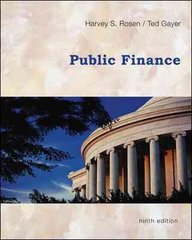Flotation Costs and NPV Bob's Diaper Factory (BDF) manufactures cutting edge moisture repellant baby diapers. It is currently at its target debt-equity ratio of 65. It's considering building a new $75 million manufacturing facility. This new plant is expected to generate aftertax cash flows of $10.2 million in perpetuity. The company raises all equity from outside financing. There are three financing options 1. A new issue of common stock: The flotation costs of the new common stock would be 6.5 percent of the amount raised. The required return on the company's new equity is 15 percent 2. A new issue of 20-year bonds: The flotation costs of the new bonds would be 5 percent of the proceeds. If the company issues these new bonds at an annual coupon rate of 7.25 percent, they will sel at par. 3. Increased use of accounts payable financing: Because this financing is part of the company's ongoing daily business, it has no flotation costs, and the company assigns it a cost that is the same as the overall firm WACC. Management has a target ratio of accounts payable to long-term debt of 15 (Assume there is no difference between the pretax and aftertax accounts payable cost.) What is the NPV of the new plant? Assume that PC has a 28 percent tax rate. Input Area: 0 2 3 .4 16 17 18 19 20 21 22 23 24 25 26 27 28 29 30 Debt-to-equity ratio Projected cost Aftertax cash flows Equity floatation costs Required return Debt frontation costs Coupon rate Target ratio AJP to LTD AP floatation costs Tax rate Output Area 32 33 34 35 36 37 38 39 40 WACC Floatation costs Project cost NPV Flotation Costs and NPV Bob's Diaper Factory (BDF) manufactures cutting edge moisture repellant baby diapers. It is currently at its target debt-equity ratio of 65. It's considering building a new $75 million manufacturing facility. This new plant is expected to generate aftertax cash flows of $10.2 million in perpetuity. The company raises all equity from outside financing. There are three financing options 1. A new issue of common stock: The flotation costs of the new common stock would be 6.5 percent of the amount raised. The required return on the company's new equity is 15 percent 2. A new issue of 20-year bonds: The flotation costs of the new bonds would be 5 percent of the proceeds. If the company issues these new bonds at an annual coupon rate of 7.25 percent, they will sel at par. 3. Increased use of accounts payable financing: Because this financing is part of the company's ongoing daily business, it has no flotation costs, and the company assigns it a cost that is the same as the overall firm WACC. Management has a target ratio of accounts payable to long-term debt of 15 (Assume there is no difference between the pretax and aftertax accounts payable cost.) What is the NPV of the new plant? Assume that PC has a 28 percent tax rate. Input Area: 0 2 3 .4 16 17 18 19 20 21 22 23 24 25 26 27 28 29 30 Debt-to-equity ratio Projected cost Aftertax cash flows Equity floatation costs Required return Debt frontation costs Coupon rate Target ratio AJP to LTD AP floatation costs Tax rate Output Area 32 33 34 35 36 37 38 39 40 WACC Floatation costs Project cost NPV







